This is how the world lives
Living space is becoming scarce worldwide. At the same time, we are spending more and more of our life indoors. It therefore becomes a question of your personality as to how you design your own four walls. We have visited people all over the world in their homes.
Our ancestors used to be housed cozily in secure, dimly-lit caves – something which modern historians consider to be a misconception. The stone age family travelled around in the open and made tents out of leather, and built huts from foliage. Caves had to be maintained for other purposes. It is we who are the true “cavemen”, the protagonists of the 21st century. There are more buildings in existence than ever before. And living beings spend more time indoors than ever before. This makes considerable demands of our “cave”: It turns from being a room for providing protection into a multi-purpose room. We want to relax, communicate and work in it – and just have some peace and quiet from time to time. Whereas our ancestors had yet to invent door hinges in order to shut themselves away, we have sliding systems. They allow us to put living and working areas to a wide range of uses. However, a journey around the globe reveals that the potential has been anything but exhausted in many places.
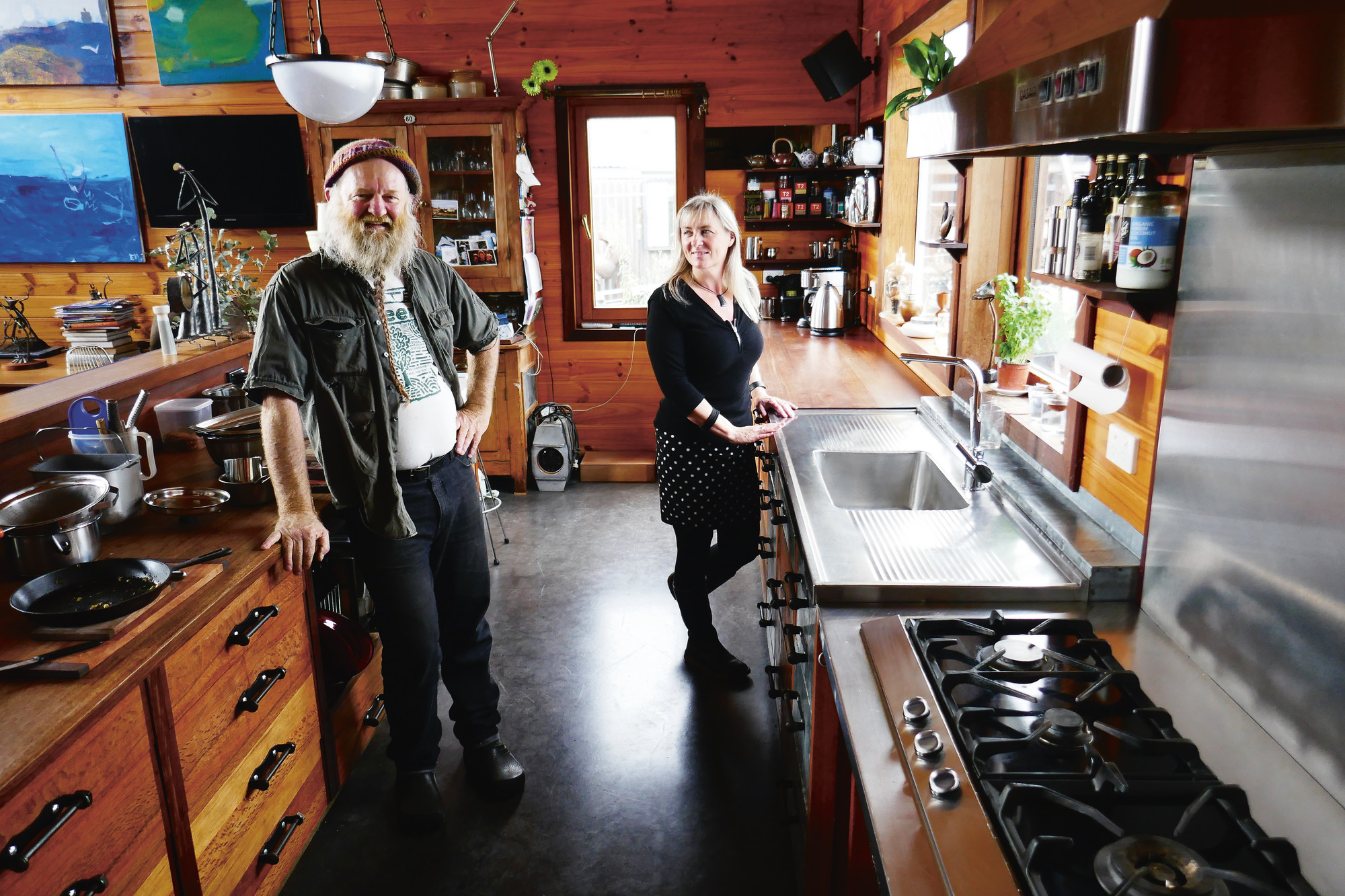
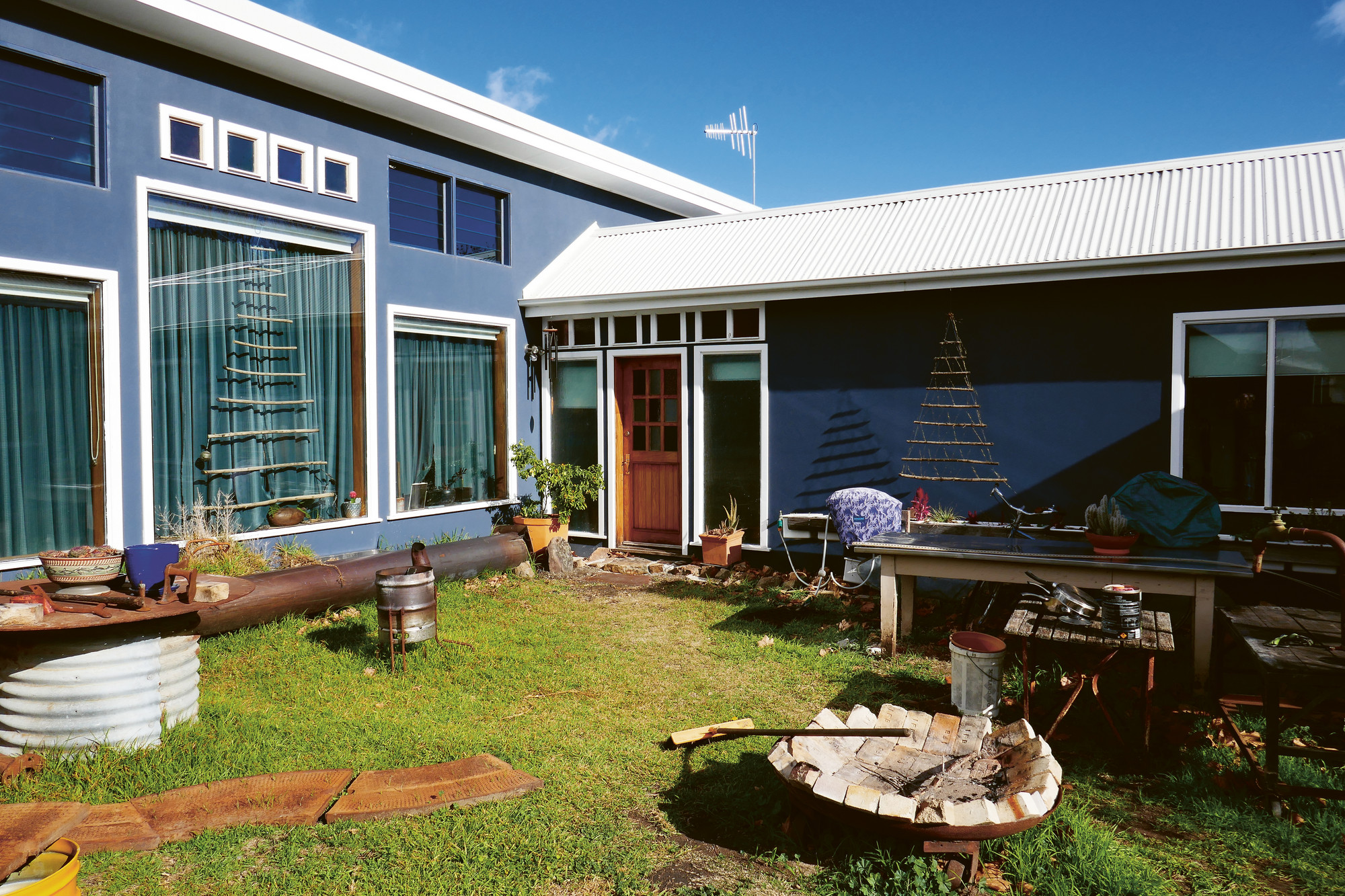
Self-made home in Australia
Our trip starts with a bang on the other side of the planet. “It was during the night of April 1, 2011 when a gas cylinder exploded in our workshop”, explains Australian Bill Dorman (60). His son Jasper (21) had been welding in the evening, and had forgotten to turn the gas tap off. This meant a major operation for the fire brigade and evacuation of the neighborhood. The huge sheet steel building was burned to the ground. A complete write-off. “It was hard to bear to begin with. But now we are glad it happened”.
Bill and his wife Jo (51) Dorman are sitting in their new house in the small town of Goulburn, south of Sydney. It is an 82 square meter room with integrated kitchen and sitting area, high entrances, and the majority of the structure is made from wood – built by Dorman himself. He is a former metalwork teacher and artist, who exhibits his iron sculptures all over the world. “The incident was the signal for us to fulfil our dream”. For decades, the family had lived in cramped conditions in a small 19th century cottage, right next to the road. “I felt isolated in the kitchen,” recalls Jo.
Determined energy pioneer
The child carer no longer has these problems. The room in the new house is a market place for social interaction. Be it family or friends: this is where life is happening, this is where people drink, cook, eat, laugh, argue and make up. “We only use the old cottage for sleeping”, says Bill.
It took Bill Dorman five years to build the new house. He did everything he could himself. Every drawer, every door latch and particularly every door – “My name is Dorman, after all”. He used recycled building materials wherever possible. Energy efficiency was a decisive aspect during the planning – unusual in a country in which the majority of houses have little insulation. The artist found the idea of sliding interesting. However, sliding doors have to shut tight – even if it’s only to keep the flies out!
In Goulburn, the temperature reaches 40 degrees in the summer, and it is extremely cold in the winter. A polished concrete floor stores the heat of the sun during the day. If that is not sufficient, a few solar panels and a Tesla battery help to raise the temperature in the evening and during the night. “We spend hardly anything on power, even in mid-winter”, says Dorman. Unlike many Australians, the Dormans do not see themselves as “barbecue types”. Although they built a fireplace in the garden, they feel most at home in their large room. Or in the new workshop.
Bill Dorman emphasizes that his “shed” is a workplace. Not a place where he can “get away from the wife and have a drink”, like many Australians. The artist’s only regret is that the old workshop didn’t go up in flames sooner
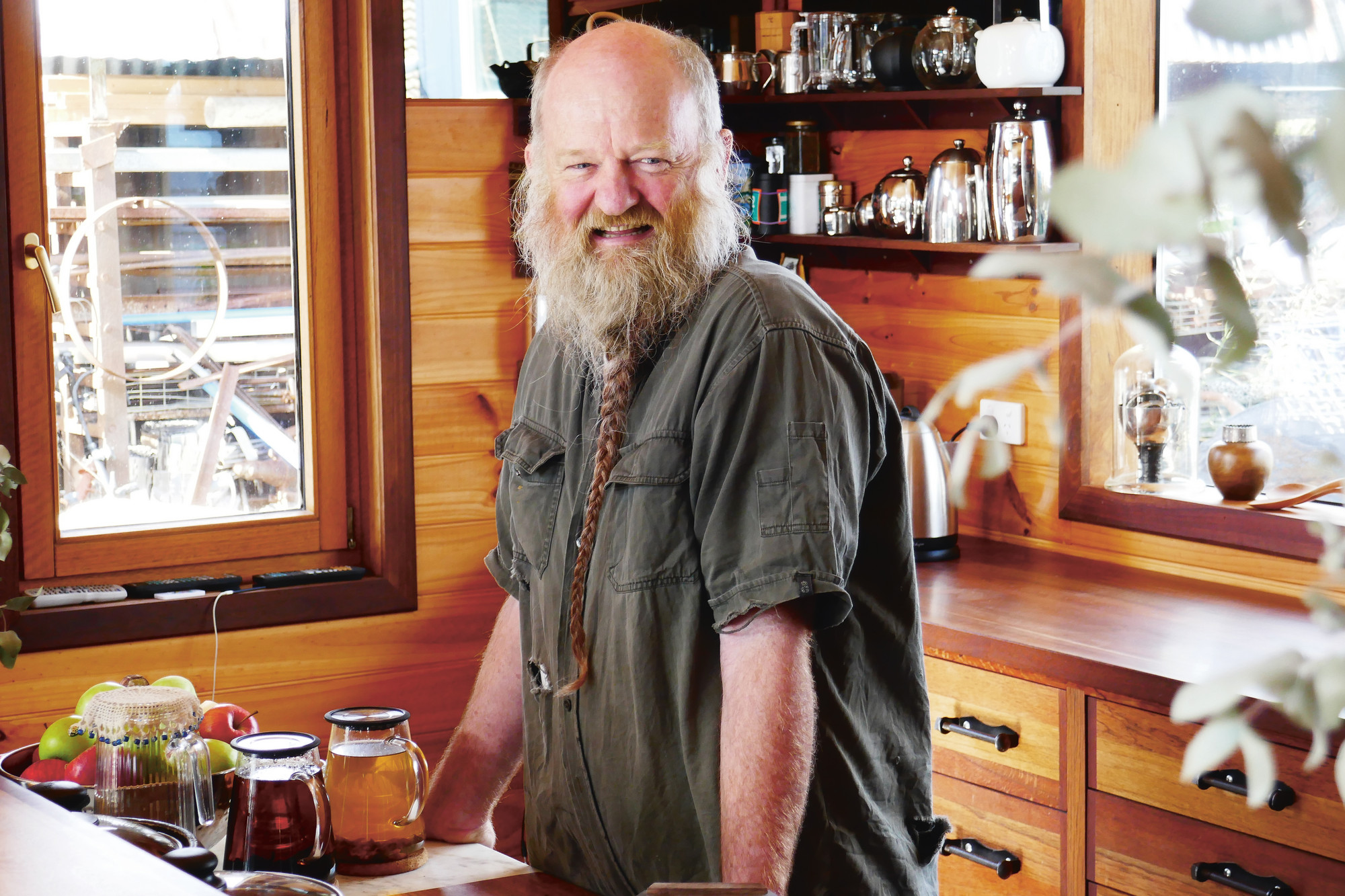
“We only use the old cottage for sleeping.”
Bill Dorman, Goulburn, Australia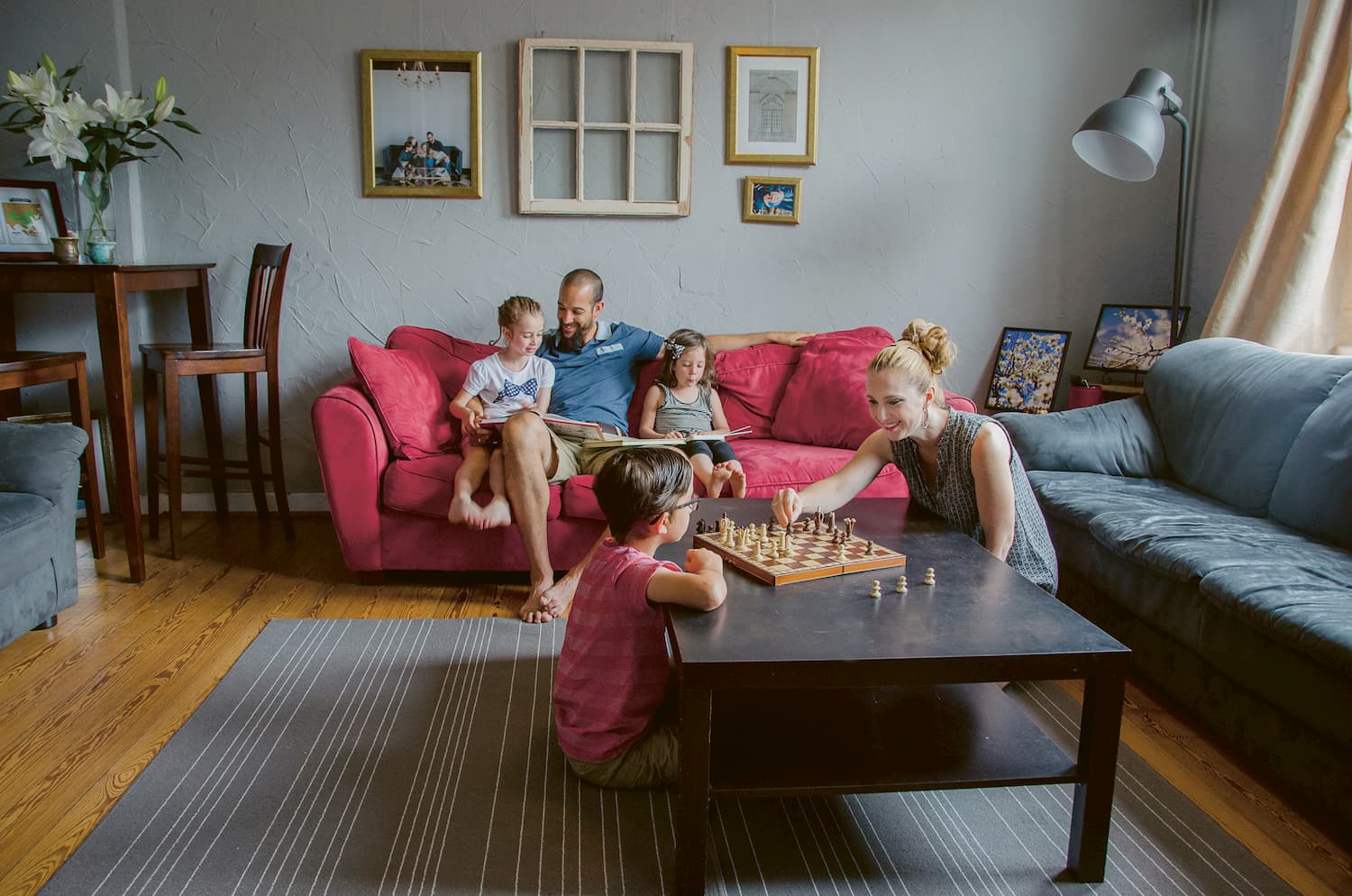
Old building in Hamburg
You can live happily ever after, even in the congested port city of Hamburg. “Burger bar, pediatrician, supermarket – everything is just around the corner!” says Katlyn Pedroza about her apartment, enthusiastically. It doesn’t bother her that the tram runs noisily through the nearby station time and time again. She moved from the USA to Hamburg eight years ago together with her husband Marcus and one-year old Carson. It wasn’t easy to find accommodation – and it has become even more difficult in the meantime. Viewings with 40 to 50 interested parties are not unusual in the more popular districts of Hamburg.
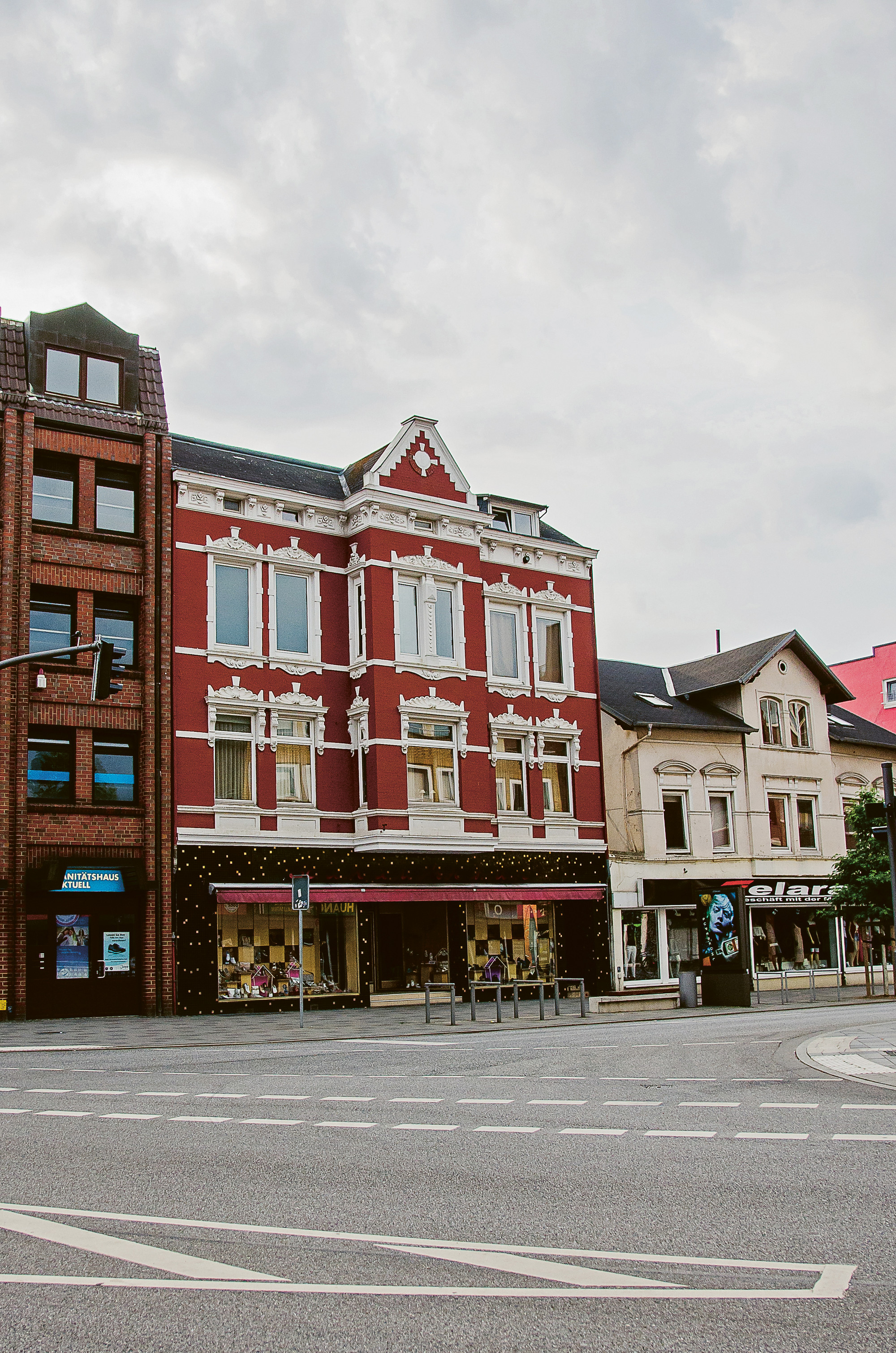
The two Texans were delighted when they were given the nod for the apartment. They liked the idea of living centrally in the Bergedorf district. Besides Carson (9), Reilly (7) and Emery (4) have now been added to the family. Friendships with other families are easy to maintain here: You often meet them in the nearby park, the parent’s center round the corner or on the way to the baker. The charm of the turn of the century has been another positive aspect. “We don’t have old buildings like this in the USA, and we like the high ceilings and the old doors very much,” explains Marcus. The spacious living room is also perfect. This is where life is happening: You can relax or romp on the sofas, and there’s plenty of room for craft projects and games with the children. Visitors often sit around the dining table
Acute shortage of accommodation
The apartment coped perfectly with the new arrivals to the family. Reilly and Emery share a large room, and Carson’s room is next door. “We swapped rooms often”, says Marcus. “The small room was the nursery initially, now it is our office. The half room used to be Carson’s play room, now we have moved our bedroom there.” The marital bed fits in there perfectly. The only problem is the lack of a wall at the hallway side. Sometimes Katlyn and Marcus would have liked a sliding door here in order to have some privacy. And flexible partitioning in the living room would also be practical. Then friends and grandparents would have a self-contained guest room when they come to visit. Who knows, perhaps the family could suggest this to the landlord when the next renovation is due?
A problem in Hamburg: Many of the 1.8 million inhabitants cannot afford to move, because the landlords like to raise the rent up when a new tenant is moving in. The average rent increased by almost 30 percent between 2007 and 2017. The Hamburg Senate is building more apartments than it was ten years ago (up to 8500 annually), but the lack of accommodation remains a problem. Having your own four walls is unthinkable for the majority of people: Hamburg has the lowest proportion of property owners after Berlin. 80 percent of the apartments are rented.
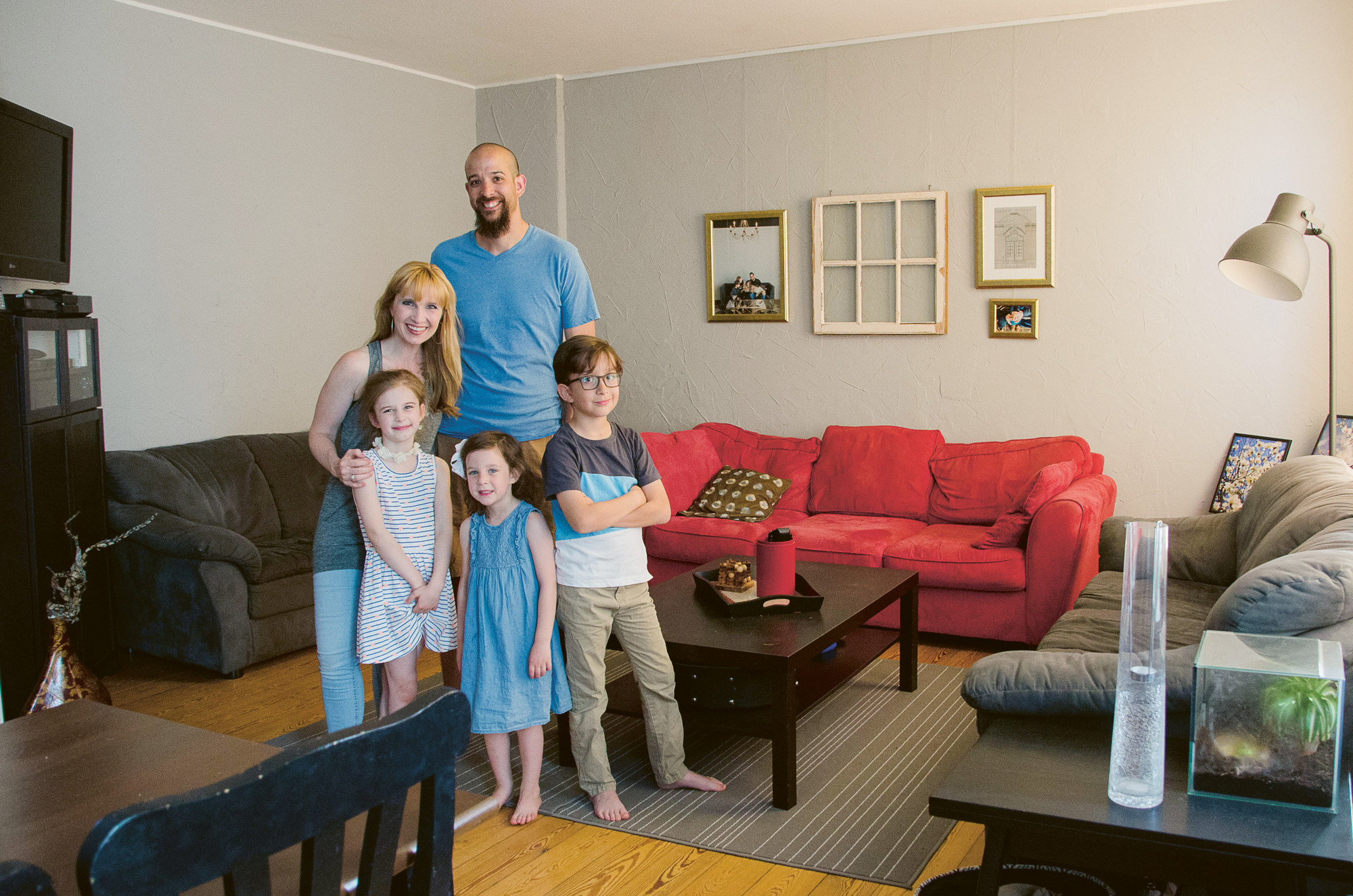
“The high ceilings and the old doors of the old building captured our hearts!”
Katlyn Pedroza, Hamburg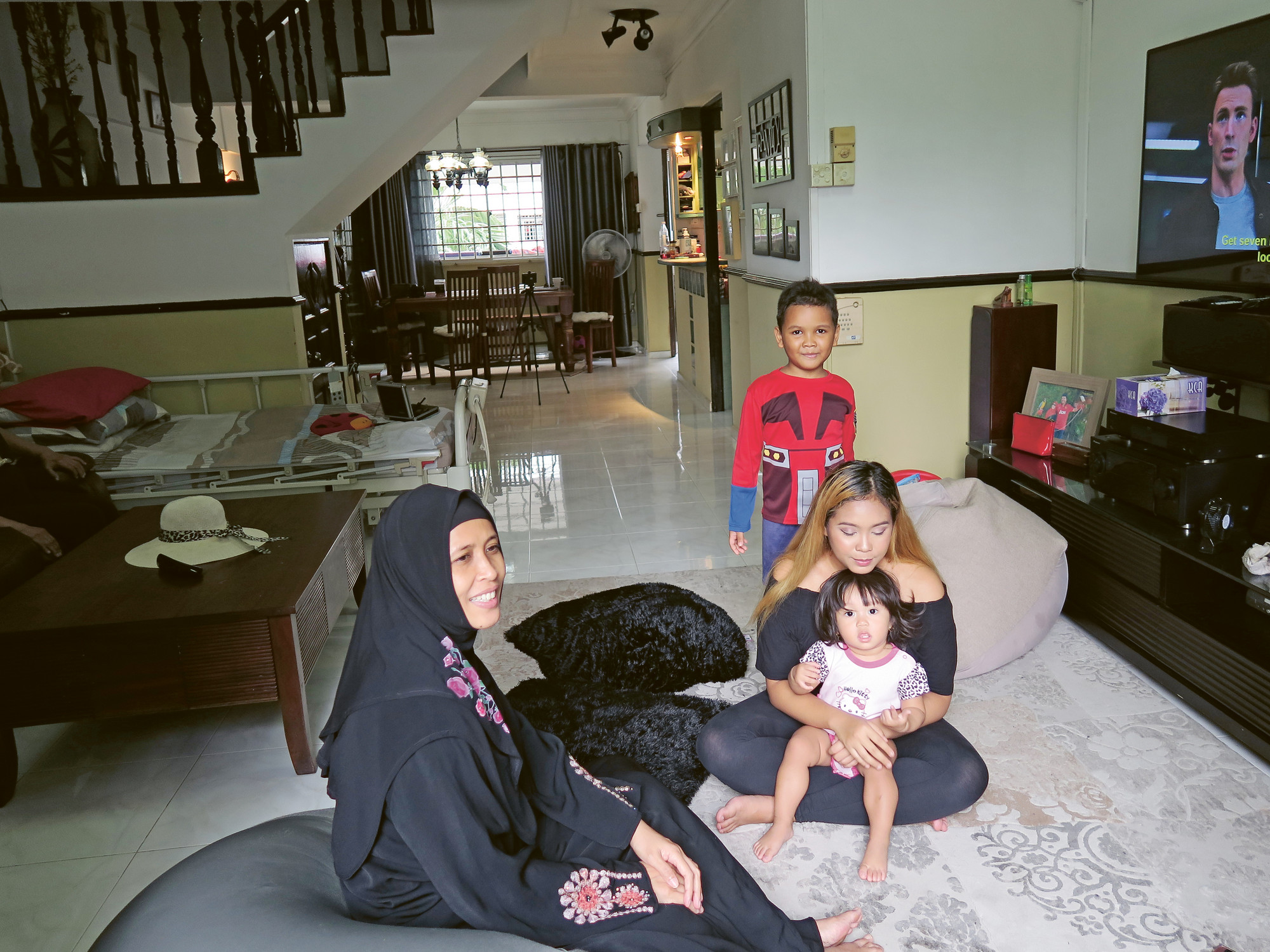
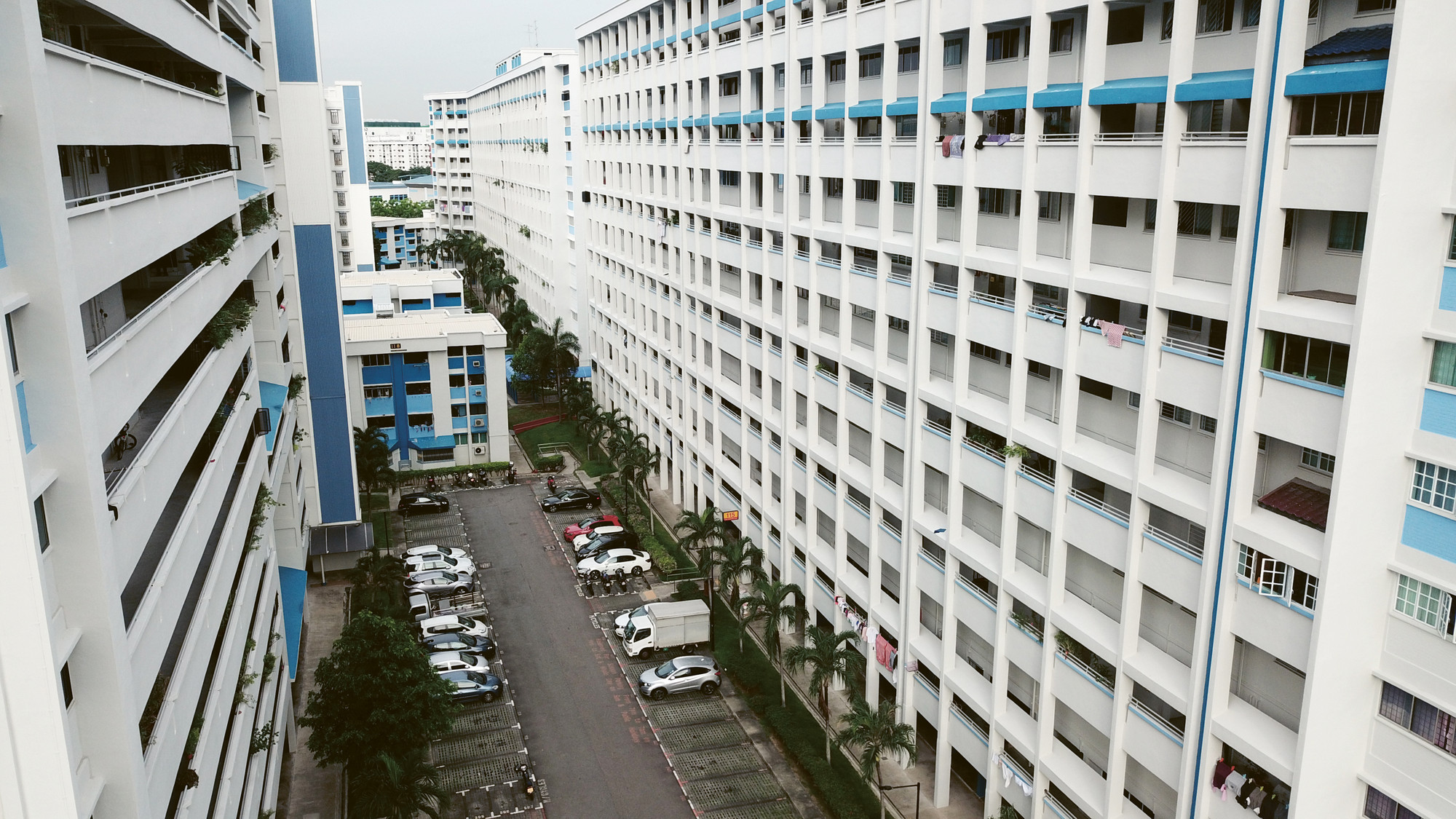
One roof in Singapore, four generations
The luxury commodity of living space is also highly sought-after on the tropical island of Singapore, the finance capital of Asia. A financial magnet that is attracting more and more people all the time. Looking at it from this point of view, it is hardly surprising that Liwani Izzati (19) sometimes wishes that she had more privacy. She is studying business management at the Polytechnic, but earns her money as a singer and often performs in the evenings – she is a local celebrity
But peace and quiet – no chance! She never has that at home, especially not on the weekend. “A dozen or more flip flops and sandals at the front door are an unmistakeable indication of the number of people who come to visit,” jokes Liwani. Cousins, some of whom she doesn’t even know, relatives from Malaysia, neighbors from apartment block 15, her mother’s work colleagues and the people looking after her ailing grandmother. “My mother Nuraini’s cooking is simply irresistible,” she adds mischievously but proudly.
We imagine Singapore to be a super-modern metropolis. However, that isn’t really the case. Away from the grand boulevards and business districts, you discover residential areas which don’t really fit in with the glittering skyline: Areas such as Bedok Reservoir, where Liwani grew up. The buildings are functional, somewhat sterile and usually older, but family friendly. These are typical HDB apartments: Apartments which are on a 99 year leasehold. The abbreviation HDB stands for “Housing Development Board”, the most important state property developer on the island, which operates a kind of social housing development.
These HDB apartments are the epitome of concentrated construction. Connections to public transport, shops and shopping centers are guaranteed. Above all: Because of subsidies, they are affordable to the masses in Singapore, which is otherwise expensive.
Big apartments replaced by small ones
Of course, Siti Jaria, Liwani's 79-year-old grandmother, also lives here. She bought the apartment with her late husband at the end of the 1970’s. Falisaya, the great grandchild, is eighteen months old. Four generations under one roof is fairly unusual, even for Singapore, where family relationships are maintained in the typically Asian way. Liwani rolls her eyes: No, it has never been quiet in this apartment.
Isn’t that normal for the Malaysians who live here, who form a minority together with the Chinese? “Yes and No”, says Liwani. The apartments used to be relatively big like this one. This one is a rarity because it even has two floors. This makes living together easier. “We also sort things out ourselves with mobile partition walls”
More modern apartments are significantly smaller and have a more open design – in order to at least give the appearance of size. Anyone who wants to have additional divisions and privacy has to use sliding doors and room dividers. The trend is clear: More and more older, bigger HDB apartments such as Liwani’s are being knocked down. Buildings are being constructed with up to twenty floors and a smaller layout. From the lobby on the ground floor to the hallway and the bathroom: Space is rare on Singapore’s shopping mile. We can only hope that elegant use is made of it.

“We often sort things out ourselves with flexible sliding walls.”
Liwani Izzati, Singapore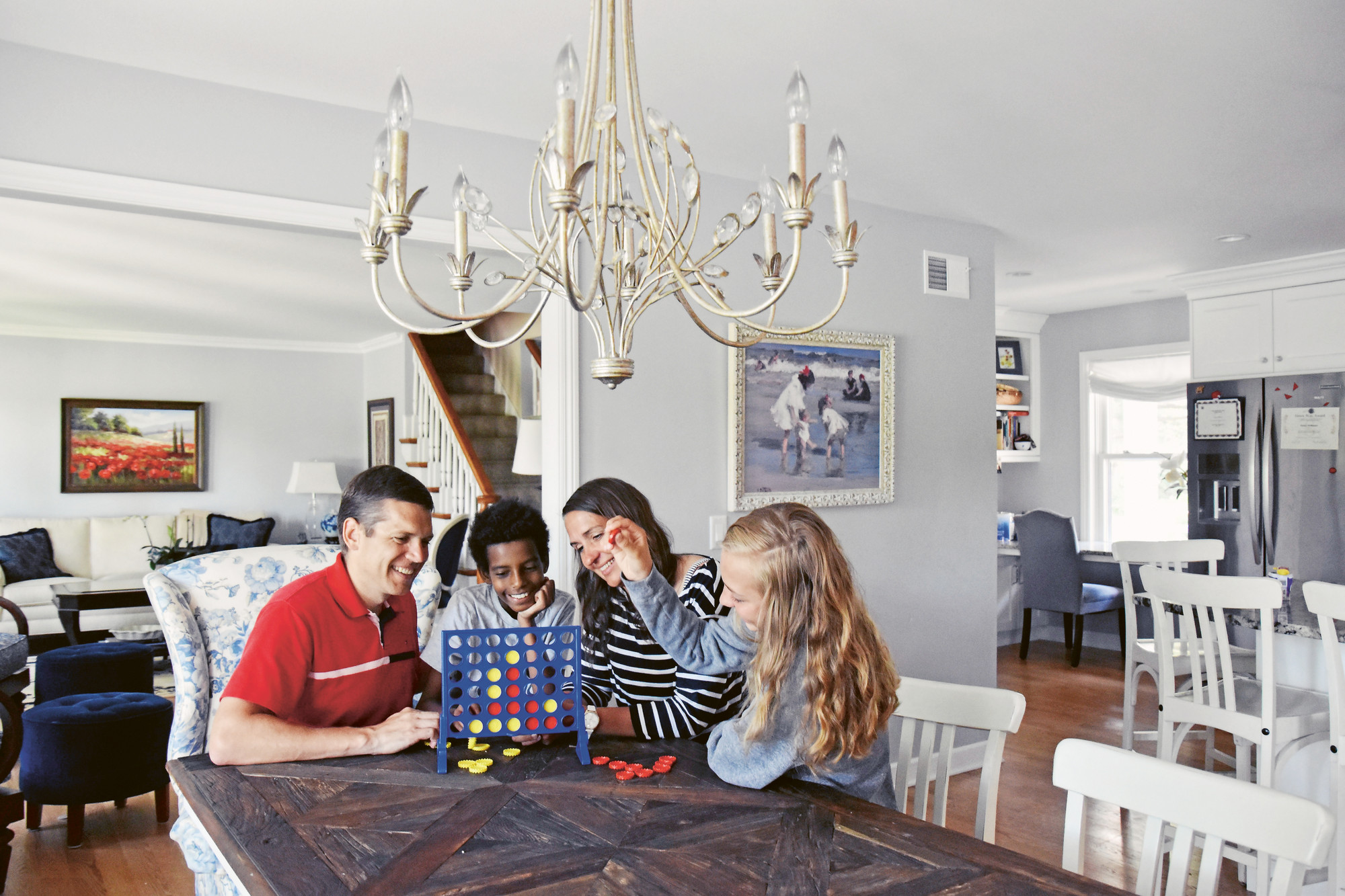
Country home in the USA
The problems are completely different in the expansive north-east of the American state of Wisconsin with its 15,000 lakes. There is plenty of land available. However, it has to be shared with bears and badgers, among other creatures. Anyone who loves the idyllic country life can still make their dream of having their own home with a huge garden come true – like the doctor family of Michael and Jodi Williams with their children Hannah, Haley, Ashley and Jacob.
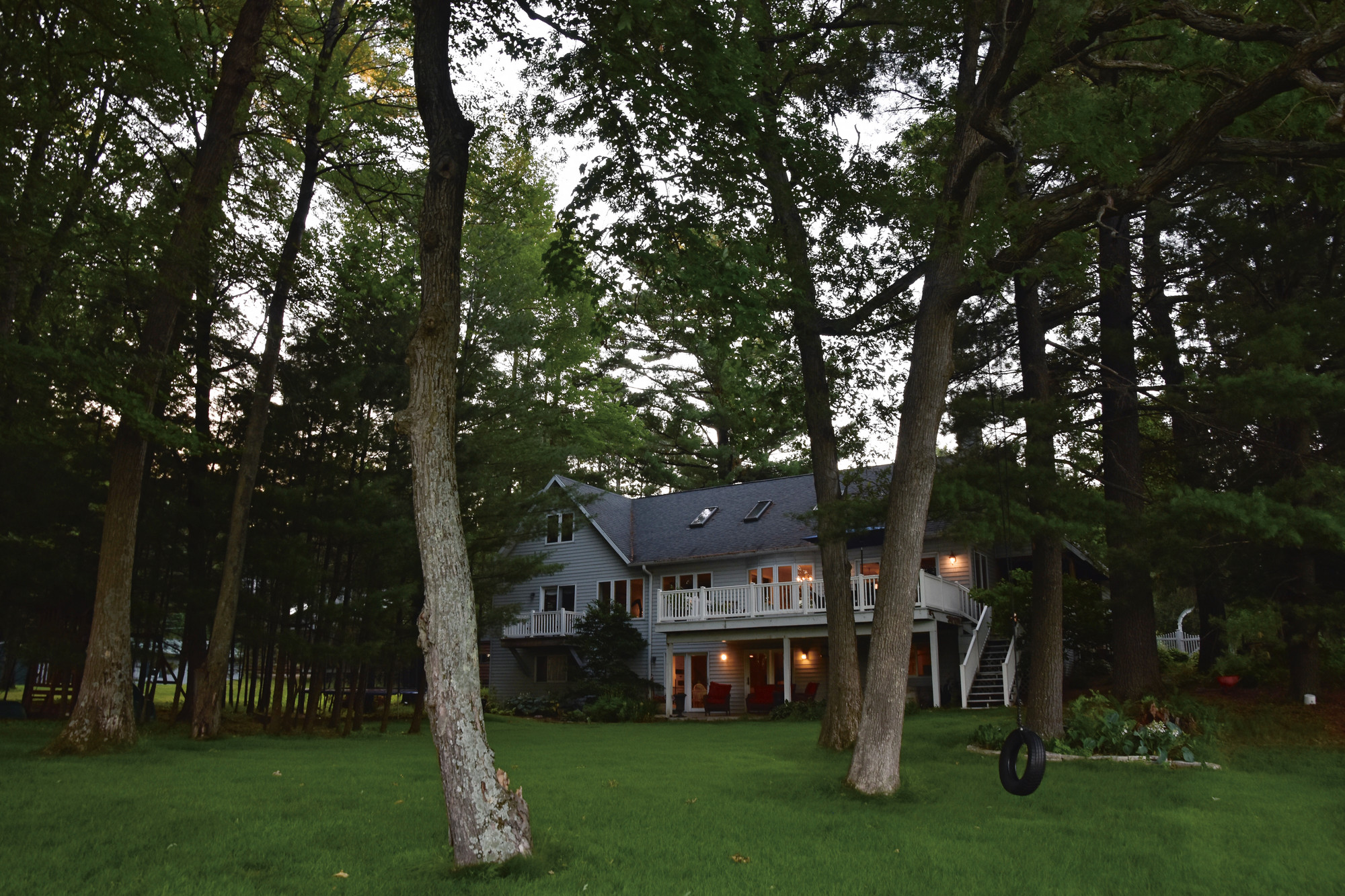
They live in their wood-framed house with a covered porch in the way that is character-defining for the USA. The design of house is a throwback to European half-timbered buildings. The roof shingles as well as the façades are made from wood. “We have added an open kitchen to our main living room”, explains Jodi. Flowing, generously designed transitions are popular in the USA, as are built-in wall units and walk-in closets, which make rooms look bigger.
“Cooking, playing and studying all happen in a single well-lit room”, says Jodi. It represents the heart of their home. Although the Williams family have plenty of room, they have fitted sliding doors to the verandah and the wall units. “This is practical if a lot of people are using the hallway.” And in their house that is often the case. They like to have guests in the house – unless they are doing what they like best: Travelling.
Construction style mirrors flexible lifestyle
The majority of buildings in the USA have sliding doors. Perhaps it somewhat reflects the mobility of the Americans. Just like house construction, which is usually completed within a few months, often in half the time it takes in Europe, for example. A US family moves house every five years on average – because work and study require it.
That is the end of our excursion. It is the beginning of a journey of ideas – to a house with movable boundaries
